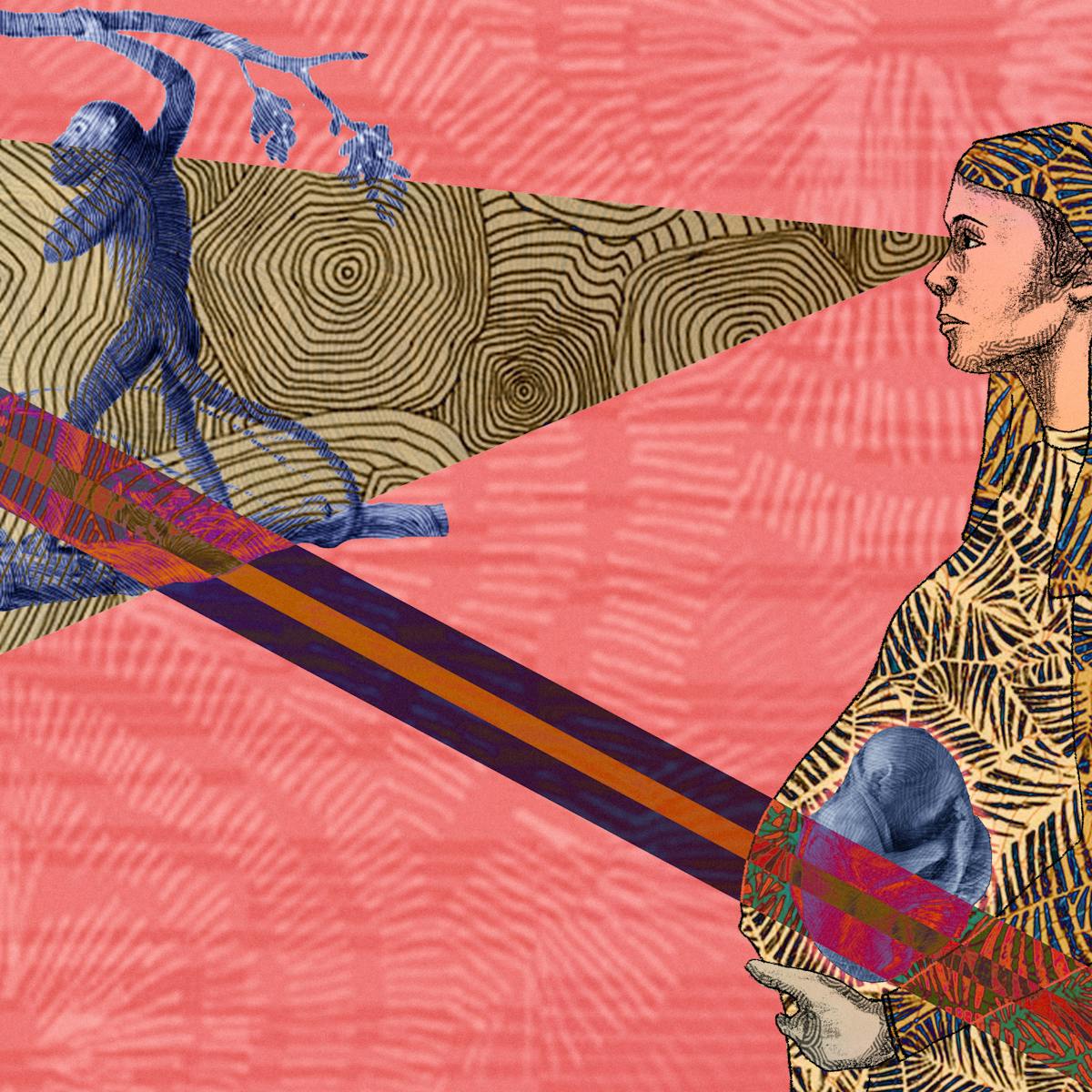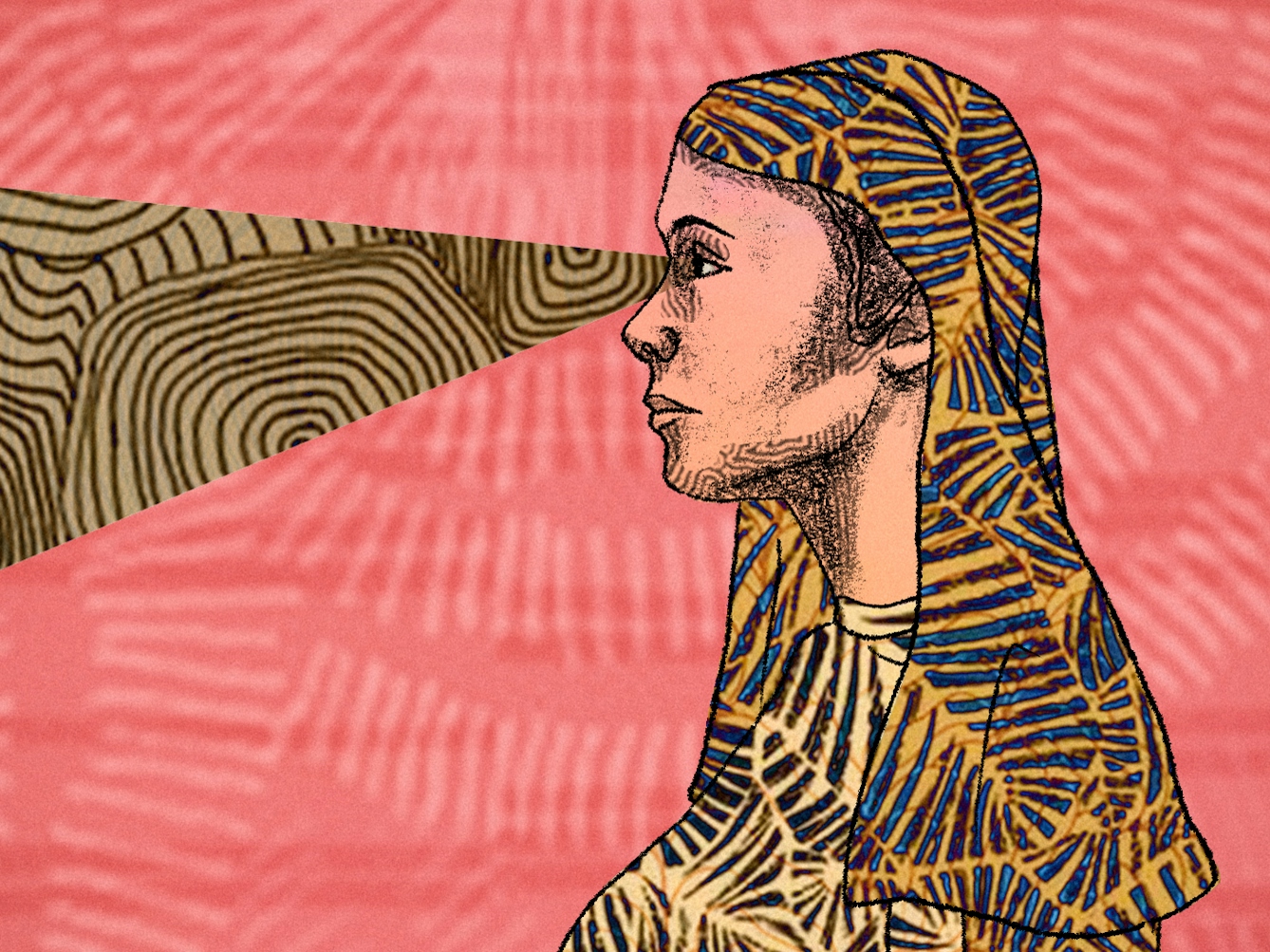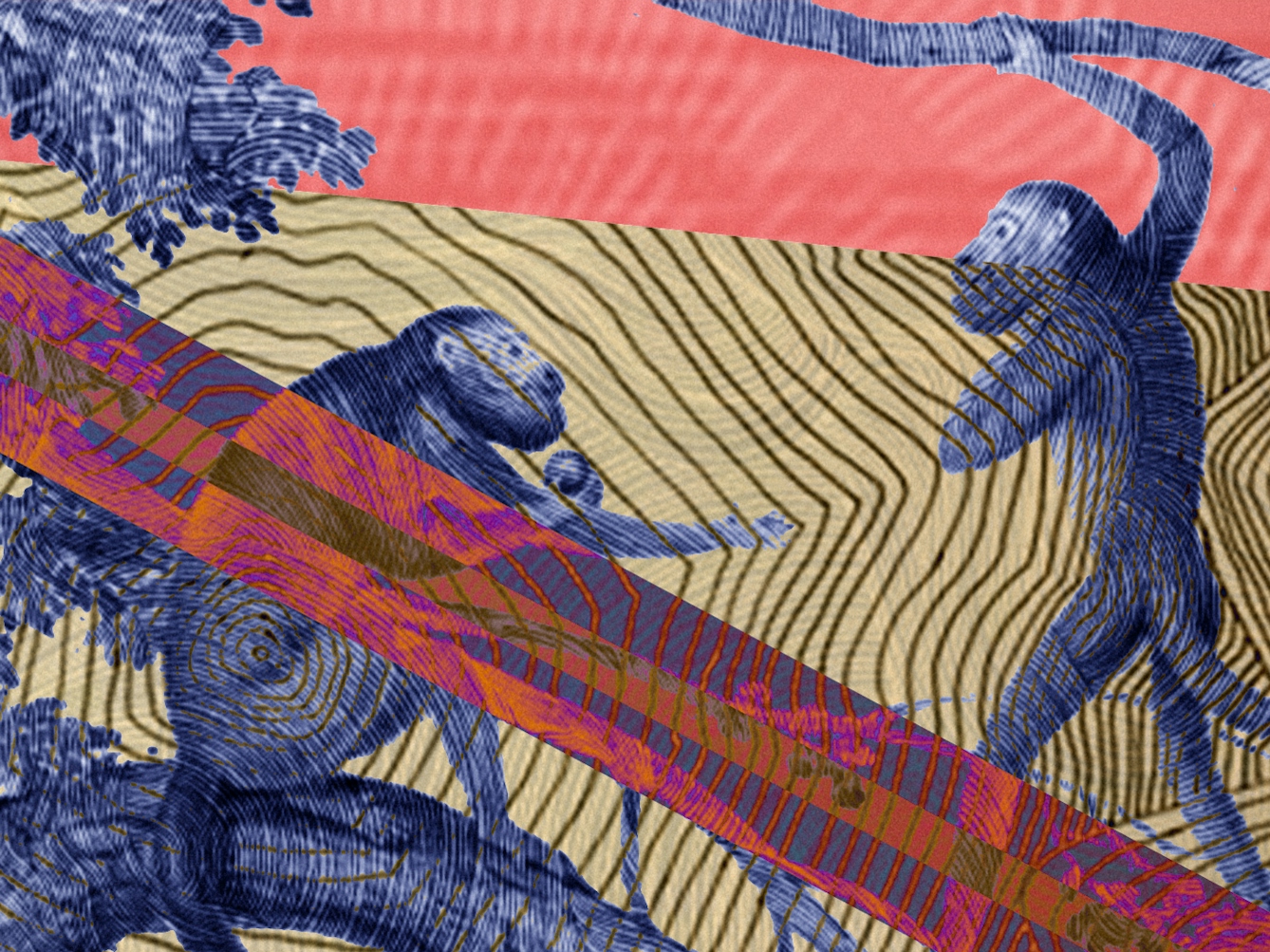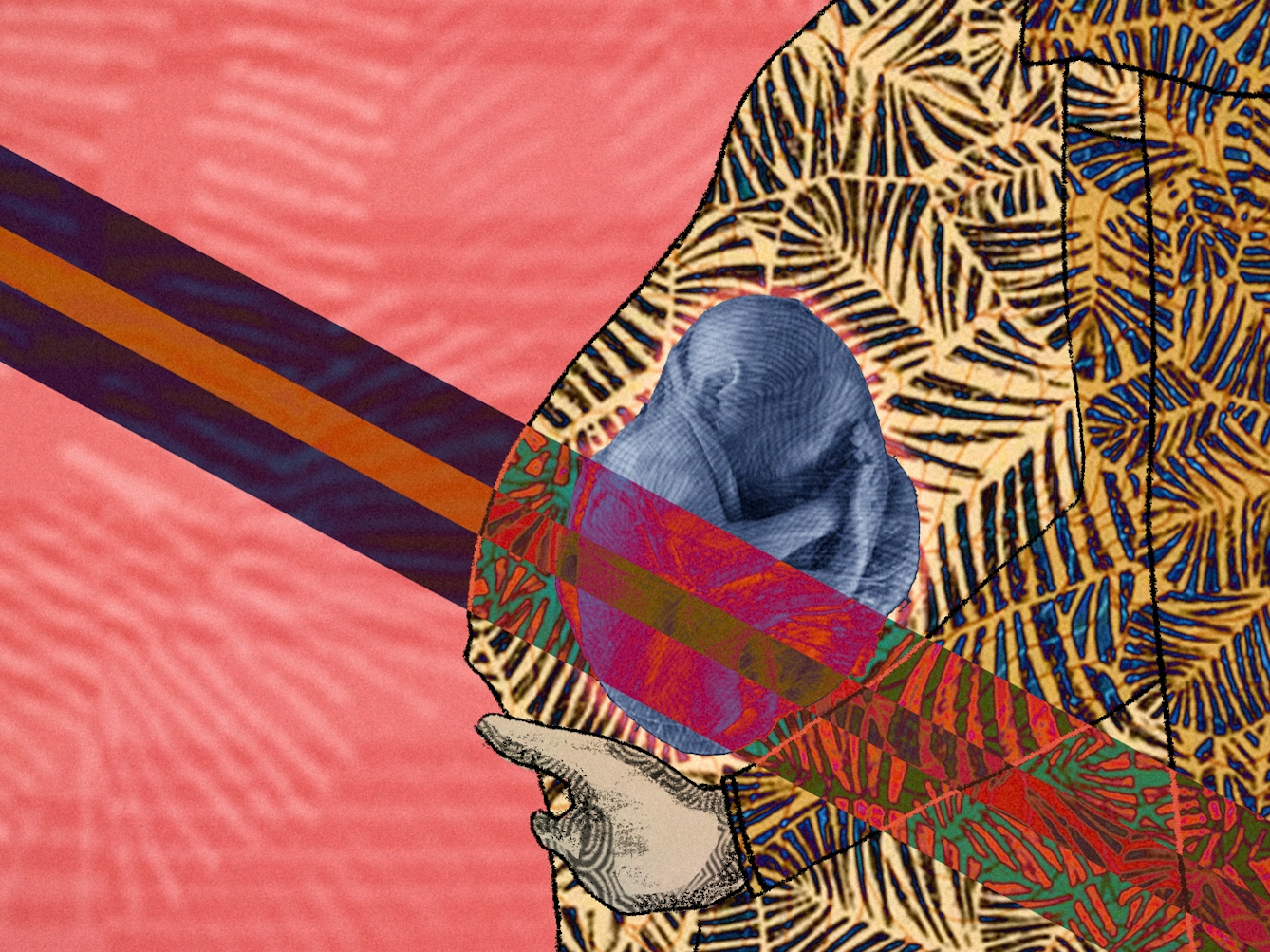As she worked on her PhD thesis, Daisy Lafarge began to experience serious abdominal pain. All around her, humans were afraid of catching a novel coronavirus from each other, and the fear itself was infectious. Could her body have been invaded by the river-dwelling parasite she was studying?
On contagion
Words by Daisy Lafargeartwork by Naki Narhaverage reading time 6 minutes
- Article

Before her death in 2011, the biologist Lynn Margulis was rumoured to be working on a book about the poet Emily Dickinson (1830–86). She lived next door to the Dickinson house in Amherst, Massachusetts, and many of her friends, colleagues and students have since recounted how Margulis enjoyed reciting Dickinson’s poems during her classes.
“Emily Dickinson talks to me all the time,” she said shortly before her death. “She is my neighbour. She is ironic. She exposes pretensions. She is a botanist. She is my favourite poet. And she is arguably the greatest English-language poet.”
It makes sense that a poet who devoted unparalleled attention to life’s minutiae would appeal to a microbiologist immersed in worlds unseeable to the naked eye. For Margulis, Dickinson’s poetry apparently increased her awareness of biosemiotics, which she described as being “alive to the cycles and mysteries of the natural world, bodily sensation, and the significance of symbols, signifiers and phrases”.
The nebulous field of biosemiotics is held together by the notion that humans are not the only sign-making (significant) species – that everything, even the most minute form of life, has a language.
In Dickinson’s poetry, language undergoes a biosemiotic slippage between nature and culture, in which written language itself is a site of material contagion:
Infection in the sentence breeds
We may inhale despair
At centuries of distance
From the malaria –

“Dickinson’s language-as-contagion recalls medieval theories of vision – intromission and extramission – and their infectious consequences.”
When Emily Dickinson wrote these lines, she was writing for hypochondriacs everywhere (or so I like to think). In figuring language as a conduit for ‘infection’, Dickinson’s poem draws on theories of miasma and contagion that persisted throughout her lifetime in response to epidemics of cholera, yellow fever, influenza, typhus and malaria.
Such theories were closer to the classical views of Galen and Hippocrates than to the germ theory that gained prominence in the years following Dickinson’s death.
Parasites on the page
Dickinson’s language-as-contagion recalls medieval theories of vision – intromission and extramission – and their infectious consequences. Extramission involved the eye sending out rays in order to see, whereas intromission involved objects emitting rays of light that reach into our eyes.
In the medieval world, seeing was likened to ingesting; intromission was particularly dangerous for pregnant women, as it was believed that whatever a woman looked at while pregnant, she would give birth to in likeness. Hypochondria might be understood as an intromissive state, a corporeal suggestibility that gleans infection from the sentence describing it.
In the weeks before the first lockdown I was trying to finish a chapter in my PhD thesis that involved reading about schistosomes, parasitic flatworms that cause schistosomiasis or ‘snail fever’ in humans. In the previous three years I had tagged along on a few epidemiological research trips to northern Tanzania, where the team was studying the transmission of schistosomiasis and other endemic zoonotic diseases.

“Extramission involved the eye sending out rays in order to see, whereas intromission involved objects emitting rays of light that reach into our eyes.”
Back then I had what I can only describe as a kind of microbial blindness: I got close to diseased animals, handled pathogenic samples, and never thought twice about what I was eating or drinking. I had antibacterial gel, but I didn’t use it as often as I should have.
But early 2020 was a different story. A new pathogen was slowly eating up more and more space in the media, and I had acute pains in my lower abdomen. I ignored them and kept reading about schistosomes, how the body of the female is threaded through the body of the male, and they live in this sexual position, ‘in copula’, for life. Soon I was shaking and nauseous.
The more I read, the more I knew, without question, that schistosome eggs were the cause of pain in my abdomen.
I read how the schistosomes lay spiny eggs that claw their way through the tissue of the bladder – causing agony – to be released in the urine. The more I read, the more I knew, without question, that schistosome eggs were the cause of pain in my abdomen. It was over a year since I’d last been in Tanzania, but the symptoms, so I read, could take that long to appear.
In the end it wasn’t schistosomiasis, but a garden-variety kidney infection. The GP had taken me surprisingly seriously though, and checked for eosinophils – parasite antibodies – in my blood.

“In the medieval world, seeing was likened to ingesting; intromission was particularly dangerous for pregnant women, as it was believed that whatever a woman looked at while pregnant, she would give birth to in likeness.”
Communication between mammals and microbes
I marvelled at the almost religious conviction with which I’d been sure of my symptoms, and wondered what would have taken their place had I not been reading about schistosomes. Perhaps my conviction was attributable to the diffuse, collective anxiety in the air at that time, a heightened awareness of microbial life; perhaps it demonstrates an extreme version of what we can undergo while reading, a kind of overidentification of body with text.
This temporary inability to distinguish between what we read and what we are reminds me of the anthropologist Gregory Bateson’s distinction between a playful ‘nip’ and an aggressive ‘bite’. While pondering abstraction in human communication, Bateson found his unlikely conclusions at the zoo, watching two monkeys play-fighting. In the play-fight, a nip is a trompe l’oeil; it looks like a bite but it isn’t.
Our ability to ‘read’ the nip amounts to both seeing and dismissing the mirage of the bite. For Bateson this seeing is a crucial step in the evolution of communication. Without it, there would be no metaphor, fiction or fantasy. The map would be conflated with the territory, dreams with reality, and the nip would be taken as a bite. Infection really would breed in the sentence, threatening an intromissive malaise.
But I wonder if Bateson’s nip-and-bite dynamic is limited by what Lynn Margulis would call its “big like us” focus on humans and mammals. This mindset leads us to overlook a third party in the encounter: the microbes that theorist Donna Haraway describes as ‘transfective’, and which pass invisibly through encounters between different animals and species. Whether nip or bite, the metacommunication Bateson observed between two monkeys at the zoo would also have been inscribed by the biosemiotic messages of their bacterial and viral partners.
Bateson has a point in stating that “the word ‘cat’ cannot scratch us”, but we could retort that the word ‘virus’ might really infect us, if I am host to a particular strain, and some of those droplets spray your way as I enunciate. In this sense, the hypochondriac reader of infection in the sentence might have something to teach us about an imaginative capacity for our microbial others – those we are surrounded by but cannot see with the naked eye.
I was lucky to not have contracted schistosomiasis, but the experience of believing I had opened up a new path of relation to the schistosomes as organisms. When it came to writing that chapter of my PhD, I found I wasn’t able to assume a stance of pseudo-objective distance; I wrote about them with the difficult intimacy I imagined we had experienced together.
About the contributors
Daisy Lafarge
Daisy Lafarge was born in Hastings and studied at the universities of Edinburgh and Glasgow. Her collection of poetry ‘Life Without Air’ (Granta Books) was shortlisted for the T S Eliot Prize 2020 and was recommended by the Poetry Book Society. Her debut novel ‘Paul’ received a Betty Trask Award, and was published by Granta Books in August 2021.
Naki Narh
Naki is an artist of Ghanaian descent from two homes, Accra and London. Her work draws inspiration from quintessentially Ghanaian tropes and concerns: explorations of self and identity, social and personal conscience. She loves to work with abstract lines, portraits, colour and patterns. She works in ink and acrylic on paper, digital painting and canvas. Explosions of colour and patterns mark her rapidly evolving signature style. Her love for art and architecture are more than expressions of self: they represent an amalgam of all that has moulded her themes and style of painting. They are an assimilation of the kaleidoscope of cultural and structural vibrancy and vitality of a life spent immersed in distinctly different cultures.

